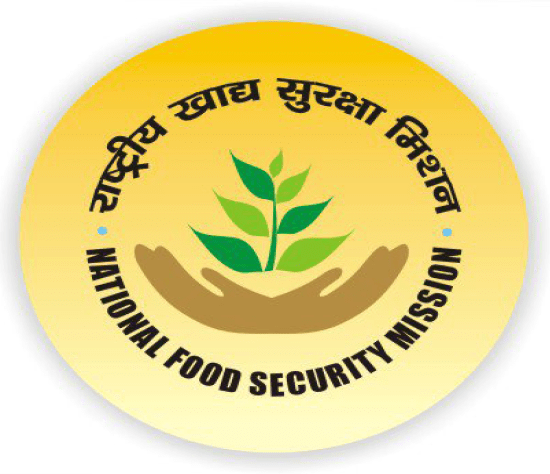
NATIONAL FOOD SECURITY MISSION (NFSM)
CONTEXT
- Government has lauched various initiatives to increase Production and Productivity of food crops under National Food Security Mission
MORE ABOUT NATIONAL FOOD SECURITY MISSION (NFSM)
- National Food Security Mission (NFSM) was launched in 2007-08 to increase the production of rice, wheat and pulses through area expansion and productivity enhancement; restoring soil fertility and productivity; creating employment opportunities; and enhancing farm level economy
- Coarse cereals were included from 2014-15 under NFSM. The Mission was continued during 12th Five Year Plan with target of additional production of 25 million tonnes of food grains. Beyond the 12th Plan, the mission was continued with new additional targets of 13 million tonnes of food grains.
- Under the Mission, Seed distribution of HYVs, farm machineries/resources conservation machineries/tools, efficient water application tools, plant protection, nutrient management, cropping system based trainings to the farmers etc. are provided.
- Focused attention for improving the seed replacement rate and varietal replacement is given in the Mission.
OBJECTIVES
- Increasing production of rice, wheat, pulses, and coarse cereals through area expansion and productivity enhancement in a sustainable manner in the identified districts of the country
- Restoring soil fertility and productivity at the individual farm level
- Enhancing farm level economy (i.e. farm profits) to restore confidence amongst the farmers
STRATEGY
- To achieve the above objectives, the Mission would adopt the following strategies:
- Focus on low productivity and high potential districts including cultivation of food grain crops in rainfed areas.
- Implementation of cropping system-centric interventions in a Mission mode approach through active engagement of all the stakeholders at various levels.
- Agro-climatic zone wise planning and cluster approach for crop productivity enhancement.
- Focus on pulse production through the utilization of rice fallow, rice bunds and intercropping of pulses with coarse cereals, oilseeds and commercial crops (sugarcane, cotton, jute).
- Promotion and extension of improved technologies i.e., seed, integrated nutrient management (INM) including micronutrients, soil amendments, integrated pest management (IPM), input use efficiency and resource conservation technologies along with the capacity building of the farmers/extension functionaries.
- Close monitoring of the flow of funds to ensure timely reach of interventions to the target beneficiaries.
- Integration of various proposed interventions and targets with the district plan of each identified district.
Constant monitoring and concurrent evaluation by the implementing agencies for assessing the impact of the interventions for a result-oriented approach.
